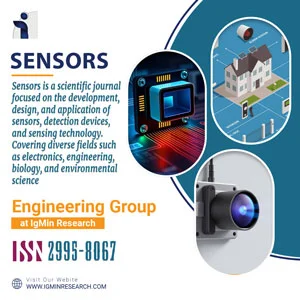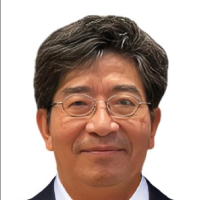Open Access Policy refers to a set of principles and guidelines aimed at providing unrestricted access to scholarly research and literature. It promotes the free availability and unrestricted use of research outputs, enabling researchers, students, and the general public to access, read, download, and distribute scholarly articles without financial or legal barriers. In this response, I will provide you with an overview of the history and latest resolutions related to Open Access Policy.
About
Sensors play a pivotal role in modern engineering, enabling the acquisition of data from the physical world and its transformation into actionable information. "IgMin Research: STEM" proudly presents the Engineering: Sensors section, dedicated to exploring the intricate world of sensing technologies and their multifaceted applications across various domains.
In an era characterized by data-driven decision-making, sensors serve as the bridge between the physical and digital realms. This section delves deep into the realm of sensors, offering insights into their design, operation, and integration. From detecting environmental parameters to enabling cutting-edge medical diagnostics, the realm of sensors knows no bounds.
With a firm emphasis on multidisciplinarity, our Engineering: Sensors section invites researchers, engineers, and enthusiasts to explore the latest advancements in sensor technologies. Dive into articles that unravel the inner workings of various sensor types, including optical sensors, biosensors, MEMS sensors, and more. Gain a profound understanding of how these devices enhance our ability to monitor, control, and respond to the world around us.
Editors
Engineering Group (4)
Open Access Policy refers to a set of principles and guidelines aimed at providing unrestricted access to scholarly research and literature. It promotes the free availability and unrestricted use of research outputs, enabling researchers, students, and the general public to access, read, download, and distribute scholarly articles without financial or legal barriers. In this response, I will provide you with an overview of the history and latest resolutions related to Open Access Policy.
Open Access Policy refers to a set of principles and guidelines aimed at providing unrestricted access to scholarly research and literature. It promotes the free availability and unrestricted use of research outputs, enabling researchers, students, and the general public to access, read, download, and distribute scholarly articles without financial or legal barriers. In this response, I will provide you with an overview of the history and latest resolutions related to Open Access Policy.
Open Access Policy refers to a set of principles and guidelines aimed at providing unrestricted access to scholarly research and literature. It promotes the free availability and unrestricted use of research outputs, enabling researchers, students, and the general public to access, read, download, and distribute scholarly articles without financial or legal barriers. In this response, I will provide you with an overview of the history and latest resolutions related to Open Access Policy.

Why publish with us?
Global Visibility – Indexed in major databases
Fast Peer Review – Decision within 14–21 days
Open Access – Maximize readership and citation
Multidisciplinary Scope – Biology, Medicine and Engineering
Editorial Board Excellence – Global experts involved
University Library Indexing – Via OCLC
Permanent Archiving – CrossRef DOI
APC – Affordable APCs with discounts
Citation – High Citation Potential
Which articles are now trending?
Research Articles
- Modeling of Cr3+ doped Cassiterite (SnO2) Single Crystals
- Analytical Expressions of the Markov Chain of K-Ras4B Protein within the Catalytic Environment and a New Markov-State Model
- Development of a Mechanical Seal Closed Design Model
- Correlation between Different Factors of Non-point Source Pollution in Yangtze River Basin
- Assessment of Thermal Uniformity of Heating Plates Using a Thermal Imaging Camera
- Investigation and Energy Modeling of New Generation Environmentally Friendly Energy Source Thorium Fueled Molten Salt Reactors
Advertisement























